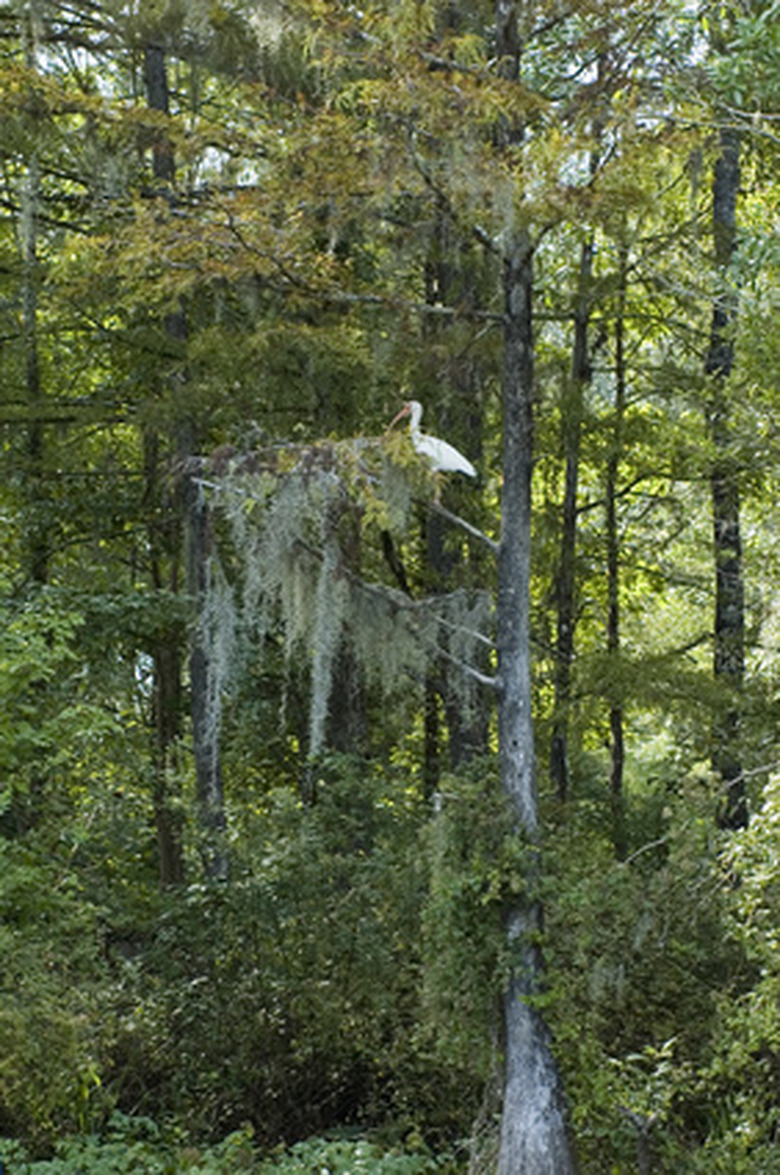Plants That Absorb Water From Air
Epiphytes, or air plants, are fascinating plants that absorb water and nutrients from the air, unlike regular plants that depend on soil for survival. Epiphytes establish themselves by clinging to a tree or rock but do no harm, using the host plant only for support.
Spanish Moss
Spanish moss is easy to spot, hanging from trees in thick, ropy, grayish-green masses up to 20 feet long. Spanish moss (Tillandsia usneoides) isn't a true moss, but a type of epiphytic plant that draws moisture and nutrients from the air and from the surface of the plant that acts as host. Cup-like scales on the leaves absorb moisture and allow Spanish moss to survive extended periods of dry weather.
Staghorn Fern
Staghorn fern (Platycerium bifurcatum) is an air plant native to the jungles of Australia, Asia, Madagascar, New Guinea and Africa. To survive, staghorn ferns attach themselves high in the tops of host trees, where they absorb most of their water and nutrition from the air. Staghorn ferns are often grown by home gardeners who mount them on sturdy boards or hang them from trees by chains.
- Epiphytes, or air plants, are fascinating plants that absorb water and nutrients from the air, unlike regular plants that depend on soil for survival.
- To survive, staghorn ferns attach themselves high in the tops of host trees, where they absorb most of their water and nutrition from the air.
Tillandsia
Tillandsia, a type of epiphytic bromeliad, is one of the most well-known air plants, commonly seen in garden centers and gift shops. With its twisted, silvery-grey foliage, tillandsia is easy to care for, often mounted on a piece of bark or driftwood. Some varieties have bright blue, red, white, orange or purple blooms growing atop pink stalks.
Orchid
Although orchids are commonly grown as indoor plants, most are air plants with very different growing requirements than the average houseplant. Most orchids will die if planted in soil and survive by attaching their fleshy, thick roots to the bark of a tree. As houseplants, orchids are often grown in containers filled with tree fiber, fir bark, charcoal or volcanic stone.
